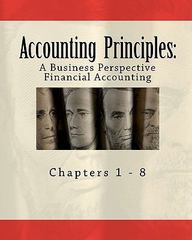Question
2. Jake is confronted with the same decision. He has the same utility function as Ellen. However, he does not know his discount factor, .
2. Jake is confronted with the same decision. He has the same utility function as Ellen. However, he does not know his discount factor, . He first answers the following"hypothetical" questions, where he has to choose between "Choice A" and "Choice B"in each of the 10 scenarios. Choice A pays $100 today. Choice B pays a larger amount in a year's time, with the amount varying across the scenarios.
Scenario Choice A (pays today) Choice B (pays in 12 months) Jake's Choice 1 $100 $102 A 2 $100 $104 A 3 $100 $106 A 4 $100 $108 A 5 $100 $110 A 6 $100 $112 B 7 $100 $114 B 8 $100 $116 B
a. Jake chooses Choice A in the first 5 scenarios, and then switches to Choice B. Based on this, what is Jake's discount rate? What is Jake's discount factor?
b. If the scenarios had been incentivized (that is, if Jake had actually received the compensation in the scenario based on his choice), do you think his discount factor would have been higher or lower? Please explain.
c. Taking the discount factor that you find in part a as Jake's actual discount factor, how should Jake divide his stipend such that he maximizes his utility?
d. Assume that these scenarios had been incentivized. What are some other issues you can see with the design of these questions that measure discount rates? How would you change the design to address these issues?
Step by Step Solution
There are 3 Steps involved in it
Step: 1

Get Instant Access to Expert-Tailored Solutions
See step-by-step solutions with expert insights and AI powered tools for academic success
Step: 2

Step: 3

Ace Your Homework with AI
Get the answers you need in no time with our AI-driven, step-by-step assistance
Get Started


